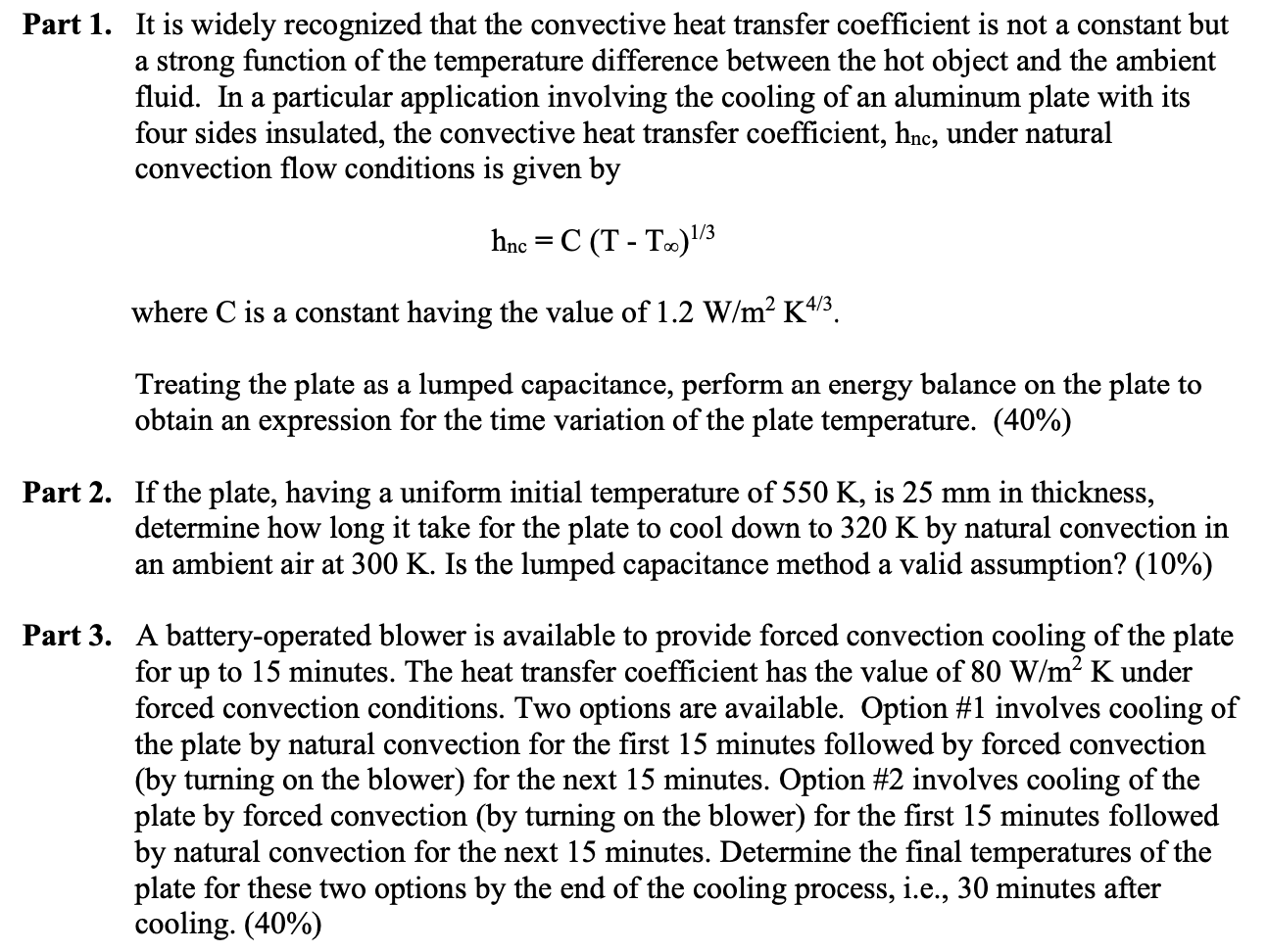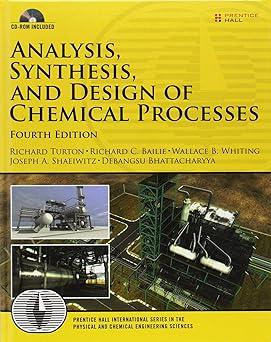Answered step by step
Verified Expert Solution
Question
1 Approved Answer
Part 1. It is widely recognized that the convective heat transfer coefficient is not a constant but a strong function of the temperature difference

Part 1. It is widely recognized that the convective heat transfer coefficient is not a constant but a strong function of the temperature difference between the hot object and the ambient fluid. In a particular application involving the cooling of an aluminum plate with its four sides insulated, the convective heat transfer coefficient, hnc, under natural convection flow conditions is given by hnc =C (T-T) 1/3 where C is a constant having the value of 1.2 W/m K4/3 Treating the plate as a lumped capacitance, perform an energy balance on the plate to obtain an expression for the time variation of the plate temperature. (40%) Part 2. If the plate, having a uniform initial temperature of 550 K, is 25 mm in thickness, determine how long it take for the plate to cool down to 320 K by natural convection in an ambient air at 300 K. Is the lumped capacitance method a valid assumption? (10%) Part 3. A battery-operated blower is available to provide forced convection cooling of the plate for up to 15 minutes. The heat transfer coefficient has the value of 80 W/m K under forced convection conditions. Two options are available. Option #1 involves cooling of the plate by natural convection for the first 15 minutes followed by forced convection (by turning on the blower) for the next 15 minutes. Option #2 involves cooling of the plate by forced convection (by turning on the blower) for the first 15 minutes followed by natural convection for the next 15 minutes. Determine the final temperatures of the plate for these two options by the end of the cooling process, i.e., 30 minutes after cooling. (40%)
Step by Step Solution
There are 3 Steps involved in it
Step: 1

Get Instant Access to Expert-Tailored Solutions
See step-by-step solutions with expert insights and AI powered tools for academic success
Step: 2

Step: 3

Ace Your Homework with AI
Get the answers you need in no time with our AI-driven, step-by-step assistance
Get Started


